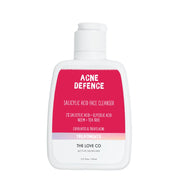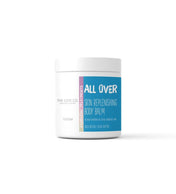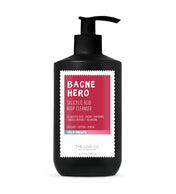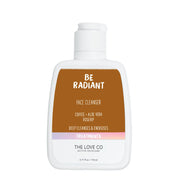Unlocking the Secrets of Skin Discoloration and Excessive Pigmentation
Yash Raj |
When it comes to skincare, achieving that coveted healthy and radiant complexion is often a top priority for many of us. But sometimes, despite our best efforts, our skin may not cooperate. Skin discoloration and excessive pigmentation can be particularly frustrating issues to deal with. Whether it's dark spots, uneven skin tone, or melasma, these concerns can affect people of all ages and backgrounds.
In this comprehensive guide, we'll delve deep into the world of skin discoloration and excessive pigmentation, exploring their causes, effective treatments, and remedies. So, if you're tired of hiding those blemishes and want to understand how to combat them, keep reading!
Understanding Hyperpigmentation: Causes and Treatment
Let's kick things off with the big question: what exactly is hyperpigmentation? This common skin woe occurs when certain areas of the skin produce an excess of melanin, the pigment responsible for our skin, hair, and eye color. The result? Dark patches or spots that stand out against the surrounding skin.
What Causes Hyperpigmentation
Hyperpigmentation can be triggered by various factors, and here are some of the key culprits:
Prolonged exposure to the sun's harmful UV rays can stimulate melanin production, leading to sunspots and freckles.
Post-inflammatory hyperpigmentation (PIH) is a common aftermath of acne breakouts. When the skin heals from these inflammations, it may leave behind discolored marks.
Pregnancy, birth control pills, and hormonal imbalances can lead to a specific form of hyperpigmentation known as melasma.
Effective Hyperpigmentation Treatment
Treating hyperpigmentation often involves a multi-faceted approach. One effective method is the use of topical creams or serums that contain ingredients like:
This powerful antioxidant can help fade dark spots and even out skin tone.
A skin-lightening agent, hydroquinone can reduce the appearance of dark patches.
These vitamin A derivatives promote skin cell turnover, helping to shed pigmented cells and reveal fresh, even skin.
In addition to topical treatments, dermatological procedures like chemical peels, microdermabrasion, and laser therapy can provide significant improvement.
Natural Skin Discoloration Remedies
For those who prefer a more natural approach to skincare, several ingredients found in your kitchen or garden may help combat skin discoloration. Here are some noteworthy remedies:
Its high vitamin C content makes it a natural skin brightener. Apply lemon juice to affected areas and leave it on for about 15 minutes before rinsing.
Known for its soothing properties, aloe vera can help fade dark spots and calm irritated skin.
This spice has anti-inflammatory and antioxidant properties. Create a paste with turmeric and water and apply it to discolored areas for about 15-20 minutes.
Rich in antioxidants, green tea can help reduce redness and inflammation, making it beneficial for those dealing with post-inflammatory hyperpigmentation.
Uneven Skin Tone Solutions: Tips and Tricks
Maintaining an even skin tone isn't just about treating existing discoloration; it's also about preventing future issues. Here are some essential tips for achieving and maintaining a harmonious complexion:
The sun is a major contributor to skin discoloration. Always wear broad-spectrum sunscreen with SPF 30 or higher, and don't forget to reapply throughout the day.
Regular, gentle exfoliation can help remove dead skin cells, allowing new, even-toned skin to shine through. Opt for exfoliants with ingredients like glycolic acid or salicylic acid.
Properly moisturized skin is less prone to developing dark spots. Use a moisturizer suitable for your skin type to keep it well-hydrated.
Dark Spots on Skin: Causes and Management
Dark spots, also known as age spots or sunspots, are a common concern as we age. They typically appear on areas frequently exposed to the sun, such as the face, hands, and shoulders. The primary cause of these spots is, you guessed it, sun exposure!
To manage and prevent dark spots, diligent sun protection and the use of skin-lightening products can be your best allies. These products can help fade existing spots while also preventing new ones from forming.
Hyperpigmentation vs. Hypopigmentation: What's the Difference
Understanding the difference between hyperpigmentation and hypopigmentation is crucial for effective skincare.
As discussed earlier, this condition involves the overproduction of melanin, resulting in darker patches or spots.
In contrast, hypopigmentation occurs when the skin produces too little melanin, leading to lighter areas on the skin. Conditions like vitiligo are examples of hypopigmentation.
Melasma and Pigmentation: A Complex Relationship
Melasma is a specific type of hyperpigmentation that primarily affects women, especially during pregnancy or while using birth control pills. It appears as brown or gray-brown patches, usually on the face.
Managing melasma can be challenging, but it's not impossible. Sun protection and topical treatments are often the first line of defense. In some cases, your dermatologist may recommend chemical peels or laser therapy for more significant improvement.
Skin Brightening Treatments: Unveiling a Radiant Complexion
Who doesn't want luminous, radiant skin? Skin brightening treatments can help you achieve just that. These treatments aim to reduce the appearance of dark spots and promote an overall glow.
Common ingredients in skin brightening products include niacinamide, alpha hydroxy acids (AHAs), and licorice extract. When incorporated into your skincare routine, these products can help combat discoloration and leave your skin looking brighter and more youthful.





